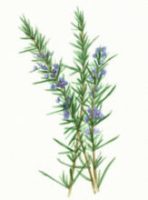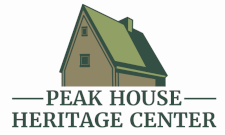Tour the Gardens
The Peak House Heritage Center Herb Gardens Reimagined
Today you will find restored gardens on the property surrounding the Peak House Heritage Center. These reimagined gardens provide a glimpse of New and Old World traditions through the lens and landscape of plants. The Peak House Herb Gardens are a garden in progress, so visit frequently to watch the plants grow! Look for the interpretive panel near the side garden. Scanning the code will take you to the About the Plants webpage which lists each plant and its purpose in Colonial times.

The History of the Peak House Herb Gardens
In 1983, the Medfield Garden Club created a set of herb gardens at the Peak House. One, a dooryard garden, at the front of the house, and the second, a shade-to-sun garden, along a stone wall on the property’s border. The 1983 Peak House Gardens drew on the historical gardens at the John Whipple House built in 1677 in Ipswich MA. The Medfield Garden Club won the Historic Preservation Award from the Garden Club Federation of Massachusetts in 1985 for its creation of the Peak House Herb Gardens.
After three decades, however, the Peak House Herb Gardens had fallen into disrepair. In September 2018, the gardens were cleared of weeds and debris, the wooden garden frames were dismantled and fieldstone edging after the Fuller Gardens at the Plimoth Patuxet Plantation was installed. Close to 80% of the original herbs used by early settlers in Medfield were reestablished. Native American medicinal, culinary and dyeing plants, well-documented in early written histories and farming journals of Massachusetts, were added to the Peak House Heritage Center Herb Gardens to create an authentic integration of native and introduced herbs common to Colonial kitchen gardens in the Northeast.
The Peak House Herb Garden was masterfully and authentically redesigned beginning in 2020 by Master Gardener Michele Finesilver Hoye.
